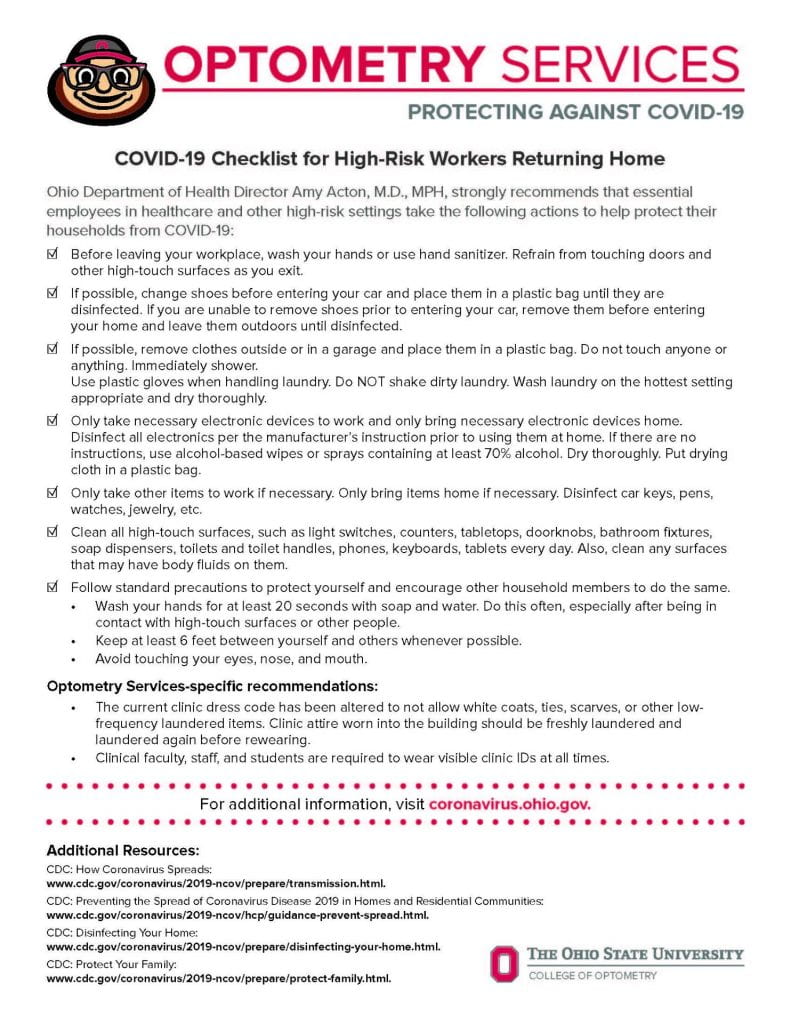Please use this link if the video does not load: go.osu.edu/June29Convergence
Q/A from webinar:
Q: Will we be using 22 Fry, 33 Fry, and M100 SL?
A: Yes.
Q: I’m traveling to Florida on Wednesday to visit family and the entire state is considered “high-risk,” so should I assume that I should hold off from coming into the college for 14 days once we return?
A: Yes. Staying away from the college and campus upon your return is the safest response.
Q: With travel restrictions extended to Dec. 31, will the tentative date (Aug. 15) for the white coat ceremony be changed?
A: Yes, however a new date has not yet been determined.
Q: Do we know yet when paper hand towels will be returned to the bathrooms in the Fry Tower?
A: Mat Johnson received communication (after Convergence) that paper towels should be installed in the next week or two.
Q: If my patient does not show up, can I remain in my exam room by myself?
A: Yes. Check in with your attending for additional learning activities to be completed in your exam room.
Q: Can we still use our professional leave for academy?
A: No. The university has banned all travel until the end of the year. If students or faculty members want to attend the Academy meeting, personal leave or vacation time will be used.


